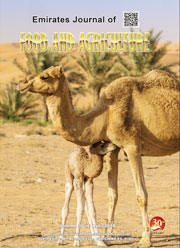Institute of Plant Biology, Biological Research Centre, H-6701 Szeged P.O. Box 521, Hungary
DOI:
https://doi.org/10.9755/ejfa.v24i6.14679Keywords:
UV-B radiation, drought, antioxidants, gas exchange, Vitis viniferaAbstract
The differences in antioxidant properties in grapevines (Vitis vinifera L. cv Romeiko) exposed to either drought, enhanced levels of UV-B radiation or to the combined application of the two abiotic stressors were studied. Two-year-old grapevines grown outdoors in 25 L pots containing peat:perlite:sand (3:1:1) were used. The following treatments were applied: i) well-watered, under ambient UV-B level treatment; (ii) water-stressed, under ambient UV-B level treatment; (iii) well-watered treatment under enhanced UV-B and (iv) water-stressed treatment under enhanced UV-B. Results indicated that predawn leaf water potential (?PD) decreased progressively in water-stressed treatments, irrespective of the level of the UV-B radiation. All treatments exhibited a close relation between photosynthetic rate (Pn) and stomatal conductance (gs), suggesting that stomatal closure is the dominant limitation to photosynthesis. Both drought and enhanced UV-B radiation caused a significant increase in hydrogen peroxide content (H2O2) and lipid peroxidation (TBARS). However, the accumulation of H2O2 was more pronounced in plants exposed to enhanced UV-B radiation. Independent of water supply, enhanced UV-B radiation significantly increased the activities of superoxide dismutase (SOD, EC 1.15.1.1), ascorbate peroxidase (APX, EC 1.11.1.11), quaiacol peroxidase (GPX, EC 1.11.1.7) and catalase (CAT, EC 1.11.1.6) as well as carotenoids content while the expression of antioxidant enzymes was lower in plants exposed only to drought conditions.










 .
. 